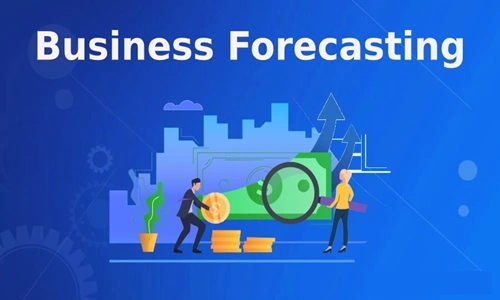As you may already know, forecasting is simply a process in which we try to make future predictions based on present circumstances and the things that already happened or previous data. Right? And that is pretty much how forecasting works in the context of business. Simply put, business forecasting is nothing but a business process in which you can look at the already available data about the past actions or moves, and the current situation of the company. You analyze both of these and make future predictions, set appropriate goals, and things like that. That’s precisely what business forecasting means. But the main question is: Is this business forecasting thing any good? Well, that’s why we are here because here we will be taking a good look at the possible advantages and disadvantages of business forecasting. That way, you’ll have a good idea of what it is, what its usage is, or is it any good or not. Alright, here we go now.

Advantages of Business Forecasting
1. Helps Make Better Decisions
See, when getting yourself into the business landscape, it’s always better to act early rather than wait and react to problems as they come. Through forecasting, a business will be able to look into what may lie ahead for them in the market, or what customers would really want, and thus carefully plan out actions. In essence, this relates to the ability to foresee emerging changes in the industry and be able to easily cope with them, achieve the best opportunities, and avoid huge problems in advance. That basically means making smart choices now based on what you think will happen in the future.
2. Makes Using Resources More Efficient
To put it simply, good forecasting is important for using resources in the best way possible. Being able to forecast the future allows a business to use resources such as people, material, and money more wisely. This saves on unnecessary spending and also increases productivity. And who wouldn’t want that, especially as a business owner? For example, the knowledge of how much of a product will be needed leads to stock up just enough so you do not have too much.
3. Keeps Customers Happy
Keeping customers happy is a big challenge for any business. Good forecasting will help you maintain the right level of products, thus avoiding a stockout, even in peak seasons. This is the part of forecasting that would bring your customers satisfaction and win their trust and loyalty toward your brand. And as you may already know, happy customers will most probably come back and refer you, resulting in more business for you.
4. Helps with Financial Planning
Forecasting is very important for financial planning too. How? Well, it provides a future view of what the sales, cash flows, and costs that a business may incur, hence better planning for budgets. It is very important during funding since banks will ask for detailed forecasts in and out. By showing a good forecast, you can prove to potential investors or lenders that your business is ready and financially smart, boosting your chances of getting the needed money.
5. Finds Weaknesses and Opportunities
Doing regular forecasts not only shows where your business is strong but also finds weaknesses and areas that need more attention. So, this constant monitoring and adjustment on the business level are translated into an ongoing improvement. It also enables a business to notice and fully exploit new opportunities quickly by constant checking and adjustments that keep a business active and competitive within an ever-changing market, which seems to be the condition every single day.
Disadvantages of Business Forecasting
1. Unpredictability
A major challenge with forecasting in business is its inherent unpredictability. No matter how advanced the tools or methods are, predicting what will happen in the future remains largely a guessing game. This unpredictability is related to the use of some data from the past and various other assumptions to make a forecast. Past conditions most certainly differ from future ones, and so will these predictions. Businesses must understand that these forecasts are not the last word but only approximate estimates; hence, a lot of caution and care needs to be taken while using them.
2. Resource-Heavy
Forecasting is not just about making predictions, nah, it also involves a heavy commitment of resources. It starts from the exercise of collection in huge proportions, which then needs to be processed and analyzed very closely. This whole exercise demands a tremendous amount of time, money, and effort. The magnitude of resources that need to be put up for effective forecasting can be quite intimidating for smaller or, for that matter, emerging enterprises aka startups. Sometimes the cost and effort that go into forecasting do not seem worthwhile relative to the benefits it can bring, and for these smaller entities, it is not an attractive option at all.
3. Old Data Problem
Forecasting in business often uses a lot of old data to predict the future. Such a method works well in stable conditions, where past trends usually repeat. In rapidly changing markets or industries, or those facing new challenges, placing reliance on old data could become tricky. If the market is moving too fast, then what might have happened in the past could not be a good guide for what will happen next. Businesses that don’t recognize and adapt to new trends might make poor choices that could hurt their future.
4. The danger of Becoming Too Comfortable
A big risk with forecasting is that it might make businesses too comfortable with their current plans and they might just want to stick with just that. It becomes a problem when a business cannot be responsive to new information or changing trends. A problem with a too-confident company regarding its predictions is that it remains the possibility of missing new opportunities or solutions for problems that emerge until it gets late.
Final Thoughts
That is pretty much it. Now you know why businesses or companies invest in business forecasting and how it can genuinely help them understand and predict new trends. Right? Well, with that said, we’ll meet you in the next one.
Business Forecasting FAQs
Q: Why is business forecasting important?
A: Business forecasting is crucial because it enables companies to anticipate market trends, prepare for potential challenges, optimize operations, and set realistic goals. By predicting future demand, sales, and financial performance, businesses can develop strategies to stay competitive and grow sustainably.
Q: What are the types of business forecasting?
A: There are several types of business forecasting, including:
- Qualitative Forecasting: Based on expert opinions, market research, and intuition.
- Quantitative Forecasting: Utilizes mathematical models and historical data.
- Time Series Analysis: Focuses on patterns and trends in historical data over time.
- Causal Models: Analyzes cause-and-effect relationships between variables.
- Econometric Models: Combines statistical techniques with economic theory to forecast future trends.
Q: What are the common challenges in business forecasting?
A: Common challenges in business forecasting include:
- Data Quality: Inaccurate or incomplete data can lead to unreliable forecasts.
- Uncertainty: External factors like economic shifts, political events, and natural disasters can disrupt predictions.
- Complexity: The interplay of multiple variables can make forecasting complex.
- Bias: Personal biases and assumptions can skew forecasts.
- Resource Constraints: Limited time, budget, or expertise can hinder the forecasting process.
Q: How often should businesses update their forecasts?
A: The frequency of updates depends on the industry, business size, and market volatility. Generally, businesses should review and update their forecasts regularly, such as monthly, quarterly, or annually. Additionally, forecasts should be updated whenever significant changes occur in the market, economy, or business operations.

